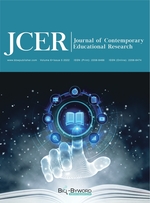Abstract
Named entity recognition, as a sub-task of information extraction, has attracted widespread attention from scholars at home and abroad since it was proposed, and a series of studies and discussions have been carried out based on it. This paper discusses the existing named entity recognition technology based on its history of development.
References
Grishman R, Sundheim B, 1996, Proceedings of the International Conference on Computational Linguistics, August 5-9, 1996: Message Understanding Conference - 6: A Brief History. Association for Computational Linguistics, Copenhagen, 466-471.
Thielen C, 1995. Proceedings of the EACL-95 SIGDAT Workshop: From Text to Tags, March 27, 1995: An Approach to Proper Name Tagging for German. Dublin, Ireland.
Lee S, Lee G, 2005, Proceedings of the International Joint Conference on Natural Language Processing, October 11-13, 2005: Heuristic Methods for Reducing Errors of Geographic Named Entities Learned by Bootstrapping. Springer Verlag, Jeju Island, Korea, 658-669.
Fleischman M, Hovy E, 2002, Proceedings of the 19th International Conference on Computational Linguistics, August 24-September 1, 2002: Fine Grained Classification of Named Entities. Association for Computational Linguistics, Taipei, Taiwan, 1-7.
Yu L, Guo Z, Chen G, et al., 2020, Review of Knowledge Extraction Technology for Knowledge Graph Construction. Journal of the University of Information Engineering, 21(2): 9.
Rau LF, 1991, Proceedings of the Seventh IEEE Conference on Artificial Intelligence Application, February 24-28, 1991: Extracting Company Names from Text. IEEE, Miami Beach, FL, USA, 29-32.
Han C, Liu Y, Ju S, et al., 2015, Recognition of Chinese Microblog Names. Journal of Sichuan University (Natural Science Edition), 52(3): 511-516.
Feng J, Li Z, Zhang D, et al., 2020, Bridge Detection Text Named Entity Recognition Based on Hidden Markov Model. Traffic World, 2020(8): 32-33.
Collobert R, Weston J, Bottou L, et al., 2011, Natural Language Processing (Almost) from Scratch. Journal of Machine Learning Research, 12(1): 2493-2537.
Cao Y, Zhou Y, Shen F, et al., 2019, Research on Named Entity Recognition of Chinese Electronic Medical Records Based on CNN-CRF. Journal of Chongqing University of Posts and Telecommunications (Natural Science Edition), 2019(6): 869-875.
Kong J, Zhang L, Jiang M, et al., 2021, Incorporating Multi-Level CNN and Attention Mechanism for Chinese Clinical Named Entity Recognition. Journal of Biomedical Informatics, 116: 103737.
Huang Z, Xu W, Yu K, 2015, Bidirectional LSTM-CRF Models for Sequence Tagging. arXiv, arXiv:1508.01991 (preprint).
Yang H, Li L, Yang R, et al., 2018, Recognition Model of Electronic Medical Record Named Entity Based on Bidirectional LSTM Neural Network. Chinese Tissue Engineering Research, 22(20): 3237-3242.
Ji X, Zhu Y, Li F, et al., 2019, Chinese Named Entity Recognition Based on Attention-BILSTM. Journal of Hunan University of Technology, 33(5): 73-78.
Liu Y, Li D, 2020, Chinese Named Entity Recognition Method Based on BLSTM-CNN-CRF. Journal of Harbin University of Science and Technology, 25(1): 115-120. DOI: 10.15938/j.jhust.2020.01.017
Yan H, Deng B, Li X, et al., 2019, TENER: Adapting Transformer Encoder for Named Entity Recognition arXiv, arXiv:1911.04474 (preprint).
Li B, Kang X, Zhang H, et al., 2020, Named Entity Recognition of Chinese Electronic Medical Records Using Transformer-CRF. Computer Engineering and Applications, 56(5): 153-159.
Zhang X, Li Y, Wang D, et al., 2020, Named Entity Recognition Based on ERNIE. Intelligent Computer and Application, 10(03): 21-26.
Shen T, Yu L, Jin L, et al., 2022, Research on Chinese Entity Recognition Based on BERT-BILSTM-CRF Model. Journal of Qiqihar University (Natural Science Edition), 38(01): 26-32.
Sun Z, Wang H, 2010, Overview on the Advance of the Research on Named Entity Recognition. New Technology of Library and Information Service, 26(6): 42-47.
